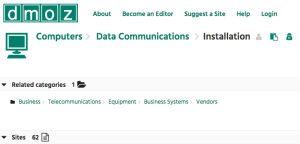A B2B website will always take up a large proportion of a marketing budget and for good reason. It’s crucial that sufficient resources are invested into a site that is geared to improve lead generation.
First impressions count, a site visitor only offers a 3 – 7 second window to get their attention before bouncing off-page and potentially onto a competitor’s website. To capture their attention immediately make it clear what products and services are being offered and how they could add value to a visitor.
Also bear in mind that website visitors might land on the interior pages of a website that relate to a search query. Therefore all pages should be consistent in creating a positive brand message through design features and other assets. Every page must be designed to increase leads and maximise B2B website ROI.
Want to build an engaging website for lead generation? Follow these tips:
Content
Search engines are actively seeking new compelling and engaging content for their users and their purpose is to provide the most relevant search results for users. So the best way for them to provide a useful search experience is with problem solving content, relevant to the search query entered. Subsequently search engines reward websites with high page ranking for creating content that attracts and engages visitors.
According to the CMO council, 25% of marketing budgets are spent on content creation however most lack the required strategies and best practices to effectively engage with their target markets. Content should be created to improve the chances of being at the beginning a new prospects’ buying process. Content assets which are frequently produced by B2B marketers include: Blogs, SlideShare presentations, videos or white papers.
Be Sociable
It seems like the whole world is using social media at the moment and in reality that’s not far from the truth. There are 1.7 billion users on the three leading social networks alone: Facebook, Twitter and Google Plus. Considering the vast number of prospects engaging with social networking sites, a website should be integrated with social to build and maintain a brand relationship off-page.
Easy fixes include adding social icons and a social network feed on the appropriate pages of a website to show recent posts. The aim is for website visitors to begin an off-page relationship with the brand by following one or more social profiles. Increased engagement is likely to result in more leads.
Call To Action
Calls to actions (CTA’s) are typically used to prompt a visitor to click through and continue down the sales funnel and are an essential component of any inbound marketing strategy as conversion rates can be clearly measured. Whilst most marketers will know where to position CTA’s so they are pleasing on the eye and balance a page well, many don’t test variations of copy and page position often enough. User testing such as heat maps or split tests give much more insight into the way prospects interact with a website. Learning from these tests can dramatically improve conversions.
Tracking
For most businesses, the aim of a shiny new website is to increase visitor numbers, driving engagement both on and off page. There is still a window of opportunity that so many businesses are not utilising at present, the huge amount of website visitors that don’t actually make contact. In fact 98% of website visitors are not getting in touch. Intelligent IP tracking solutions are the ideal way to identify those businesses.
This blog was originally posted on the Lead Forensics website. Read the original article here.
Business Articles | Business 2 Community
(407)





